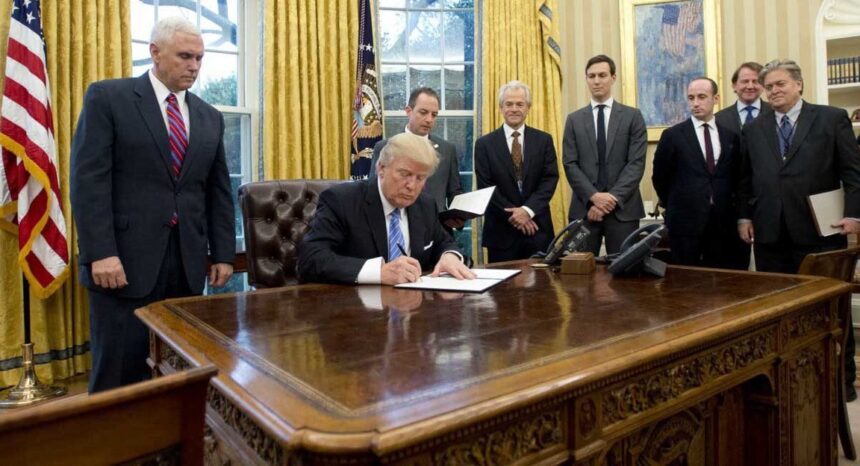In January 2017, President Donald Trump reinstated and expanded a policy that forbids international organizations from using U.S. foreign aid to promote abortion or provide information about abortion as a form of family planning.
The policy, established by President Ronald Reagan in 1984, is commonly referred to as the Mexico City Policy because it was introduced to the International Conference on Population held in Mexico City that year. Critics often refer to it as the “global gag rule.”
Reagan’s policy tightened restrictions on funds distributed through the U.S. Agency for International Development (USAID). The Foreign Assistance Act of 1961 already prohibited non-governmental organizations from using federal money to pay for abortions or entice women to have them. Over the years, the Mexico City Policy has been reinstated and rescinded multiple times, depending on the party of the president who is in office.
Despite the controversy and amount of federal funding involved, there is limited published research on the impact of the Mexico City Policy. Journalist’s Resource has pulled together a few academic studies as well as other resources that we hope will be helpful to journalists covering this topic.
——-
“United States Aid Policy and Induced Abortion in Sub-Saharan Africa”
Bendavid, Eran; Avila, Patrick; Miller, Grant. Bulletin of the World Health Organization, 2011. doi: 10.2471/BLT.11.091660.
Summary: Three researchers from Stanford University look at how the reinstatement of the Mexico City Policy in 2001 affected the probability that a woman in sub-Saharan Africa would have an induced abortion. The study, which focuses on 20 countries, suggests the Mexico City Policy is associated with an increase in abortions. “Overall, the induced abortion rate increased significantly from 10.4 per 10,000 woman–years for the period from 1994 to 2001 to 14.5 per 10,000 woman–years for the period from 2001 to 2008 (P = 0.01). Although the trend changed gradually, the timing of the rise is consistent with the reinstatement of the Mexico City Policy in early 2001.”
“Contraceptive Supply and Fertility Outcomes: Evidence from Ghana”
Jones, Kelly M. Economic Development and Cultural Change, October 2015, Vol. 64. doi: 10.1086/682981.
Summary: The author examines how cuts in U.S. funding for contraceptives affect pregnancy, abortion and births in one nation in sub-Saharan Africa. The study indicates that a smaller supply of contraceptives resulted in a greater number of pregnancies. Among rural women, the use of abortion rose by 2.35 percentage points.
Other resources:
- A 2016 study published in The Lancet, “Abortion Incidence Between 1990 and 2014: Global, Regional, and Subregional Levels and Trends,” finds that abortion rates have fallen globally.
- The U.S. Agency for International Development (USAID) helps fund a range of international projects aimed at, among other things, improving global health and reducing poverty.
- This 1984 article in Population and Development Review explores the Mexico City Policy.
- President Donald Trump’s 2017 “Presidential Memorandum Regarding the Mexico City Policy.”
- The 2009 statement from President Barack Obama on rescinding the Mexico City Policy.
- The 2001 statement from President George W. Bush on restoring the policy.
- The 1993 statement of President Bill Clinton on rescinding it.


Expert Commentary